For the In- giro per i Borghi column, Initaly today introduces you to a beautiful village that makes up one of the wonderful valleys of the Monti Lattari, Tramonti.
As we can well understand from the etymology of its name ‘intra montes ubertas’, Tramonti owes its name to its characteristic territorial configuration, being nestled between mountains.
An area rich in vegetation, Tramonti is known for its terraces cultivated with lemons, olives and vines, and in the upper part for its leafy chestnut groves.
Tramonti is also one of the most characteristic localities of the Amalfi Coast, both for its strategic position and for its division into thirteen hamlets: Pucara, Novella, Gete, Ponte, Campinola, Corsano, Cesarano, Pietre, Capitignano, Figlino, Paterno Sant’Arcangelo, Paterno Sant’Elia, and Polvica.
As we can see from its architectural heritage, we understand that Tramonti has also evolved ethnically, due to the many peoples that have inhabited it.
The first people who lived in the village were the Picentines, who, fleeing from the Romans, built the first hamlets and gave birth to Tramonti.
It was one of the eight Lands that belonged to the Republic: the sailors of this village were called indistinctly by the generic name of ‘Marinai Amalfitani’. Among the eight lands that belonged to the Amalfi Republic, with the fall of the latter to the Normans, the dark period of Amalfi and Tramonti began.
Tramonti was caught up in the internal affairs of the Duchy of Amalfi and, during the conflict between the Angioni and the Aragonese, decided to side against Amalfi by supporting the Aragonese.
From here we can well understand the long history of its rather tumultuous architectural heritage.
Tramonti and its wonderful trails
Trail of the 13 churches of Tramonti
In order to really get to know the village of Tramonti, one must walk the famous 13-church trail.
As the name of the trail already implies, we can explore the thirteen churches in the respective hamlets of Tramonti.
Besides visiting Tramonti, it is also useful to organise a trip to the nearby seaside resorts (Maiori, Minori, Atrani or Amalfi) or the beautiful Ravello.
As previously mentioned, those who will use path 310 to visit Tramonti can start from any of its villages.
One of the starting points for this itinerary is Pucara, where it is possible to discover the Conservatorio di San Giuseppe and Teresa, the birthplace of Tramonti’s famous liqueur made from the infusion of 15 herbs.
Continuing our route, we find the church of Sant’Erasmo, and continuing along the Vallone Sant’Antonio, we encounter the church of San Bartolomeo Apostolo built in the village of Novella.
After Novella, we arrive at Gete, where there is a very ancient rupestrian chapel, dating back to the 8th century, and the church of San Michele Arcangelo.
The next village is Ponte, in which stands the church of San Felice, dating back to 1700. Once past the Ponte church, one must take the Maiori-Chiunzi carriageway and cross it to take the cart track below.
Shortly after, we reach Campinola where we find the Church of San Giovanni Battista.
Continuing along 310, still in the village of Campinola, it is possible to visit the Giardino Segreto dell’Anima (Secret Garden of the Soul), first contacting its owner. This is a botanical-experimental garden where you can see many botanical varieties, including around 300 varieties of roses.
After passing Casa Laurom, you arrive in Corsano, where the only church built in recent times (1980) stands, the Church of San Salvatore.
Climbing the Colle Santa Maria, where the Castle of Santa Maria La Nova was built, we find the town cemetery.
We descend on the opposite side of the hill to reach the village of Capitignano.
After a few hundred metres, we come to the Church of Santa Maria della Neve, dating back to the end of the 16th century, built ex novo on the ruins of the pre-existing 1231 church.
From here we can continue on to Pietre, where not far from there we visit the Church of San Felice di Tenna, rebuilt in 1700 on the ruins of the pre-existing 1500 church, which collapsed following the earthquake of 1688.
We continue along the 310 until we reach the village of Figlino, so called because it was the site of a hospital-brefotrophy that in the 8th-9th centuries housed newborn illegitimate children, known as “figlini”. In Figlino is the Church of San Pietro, built in the late 1500s and early 1600s.
Immediately afterwards, we find Paterno Sant’Arcangelo, where the oldest church in Tramonti stands, the Church of the Ascension, built in the 10th century.
Continuing along path 310, we take the dirt track that leads to the village of Paterno Sant’Elia.
In Paterno Sant’Elia we find the Church of Sant’Elia, built in 1500. Again at Paterno Sant’Elia the 315c CAI joins the 310 CAI, which connects Tramonti to the towns along the coast (Maiori, Minori, Atrani and Amalfi) and to Ravello.
The penultimate stop is Borgo Ferriera, so called because of the presence of an ancient paper mill, which exploited the motive power of the Reginna Major river.
We thus return to Pucara, the starting and final point of our trail.
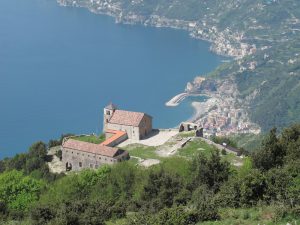
Path of the Ants
The Formichelle path, a route connecting Tramonti to Maiori and Minori, takes its name ‘Formichelle’ from the women who walked along it.
The path runs through an area rich in lemon groves and reaches Maiori and Minori. In fact, the ‘Formichelle’ were the women who, with bags weighing around 55 kg, walked the stretch in single file, carrying freshly picked lemons.
This was the work most practised by women on the Amalfi Coast until the 1970s. It was very hard work, in some respects backbreaking, but they did it with surprising naturalness.
The route starts in Paterno Sant’Elia, near the Church of Sant’Elia, where it intersects with the Route of the 13 Churches (310 CAI).
From this point, descend along Via Vitagliano (the asphalt road to the right of the Church of Sant’Elia), until you reach the place known as Casa Vitagliano (218 m). Here, you leave the asphalt road to follow a municipal path to the right. After about 200 metres, you arrive at the intersection with Path 315E for Ravello. At this junction (m 210), continue left. The path, after a series of steps, becomes a dirt track that continues in this manner for the entire route.
Having arrived at the Vallone Trapulico (m 160), which can be identified by the presence of an ancient water conduit dug into the rock to the right of the path, one must continue along the steep slope to the right and then along the subsequent footpath that leads to the locality of San Gineto (m 295). This is where the Formichelle path ends at the intersection with path 315A. From here, it takes only about 20 minutes to reach the Percorso dei Limoni, which connects Minori to Maiori.
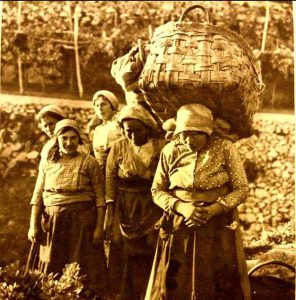
What can we visit in Tramonti?
- Castello di Santa Maria la Nova
One of the fortified buildings we encounter in Tramonti is the Castle of Santa Maria la Nova, which was built in 1457 by Raimondo Orsini, Prince of Salerno.
This structure, built with ten towers and seven bastions, included numerous flats and stables.
Inside is the church of Santa Maria la Nova.
Today, only the remains remain, in particular of the city walls, which unfortunately cannot be visited.
- Torre Orsini
Also fascinating is the Orsini Tower, much loved by Totò for the chance to breathe pure air and enjoy the view of the valley.
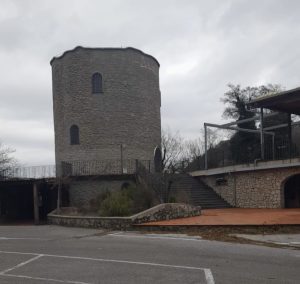
- Chiesa dell’Ascensione
The Church of the Ascension, located in Paterno S. Arcangelo, is very characteristic. Built in the Romanesque style, it was closed in the 20th century and contained many treasures that have now been lost.
It has been open for worship again for a few years.
- Cappella Rupestre di Gete
In the hamlet of Gete stands the Chapel of Sant’Angelo, a unique example of rock architecture, built in a cave.
Inside the cave is the chapel, with a square plan, divided into two naves of two bays each of different width.
The left aisle is the largest and houses the presbytery. The entire architectural space is conditioned by the shape of the natural grotto, to which it is connected. The façade, which is developed close to the front limit of the grotto, is composed of two irregular barrel-vaults (corresponding to the two internal naves), mostly free and with large windows.
Natural lighting is particularly impressive and comes from the front windows and small side openings.
Next to the remains of the Church of St. Angelo, which already existed in 1181 and was destroyed by a flood in 1735, one can admire the rock chapel dedicated to St. Angelo, probably built in connection with an earlier pagan place of worship (this overlap often occurs).
The chapel has a square plan, divided into two naves and covered by pointed cross vaults, supported by a pillar and two columns. The structure is apsidal and was decorated with a fresco depicting Our Lady of Grace.
To the right is a small helicoidal room, covered by a dome decorated with river pebbles depicting floral motifs; above this is another small room decorated with star-shaped motifs, which scholars believe to be a tomb.
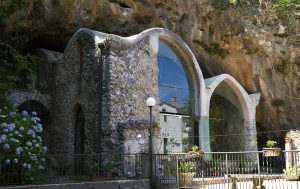
- Conservatorio dei SS. Giuseppe e Teresa
No longer open to visitors internally, the Conservatorio dei SS. Giuseppe e Teresa in Pucara was built in the 18th century as a place of training for the daughters of Neapolitan noblemen. It later became a convent of the nuns of Sts Joseph and Teresa between 1723 and 1900. It was here that the nuns first prepared the famous Concerto, a barley and herb-based liqueur typical of Tramonti.
- Chiesa di San Giovanni Battista
The architectural complex of the Church of San Giovanni Battista is located in the rural hamlet of Campinola in Tramonti, in a predominantly mountainous and rural area with scattered dwellings. The church is integrated into its surroundings, consisting of a small grouping of houses facing the public road and the square in front.
The sacred building has a longitudinal structure, with two adjacent naves, apses but no transept, separated by a series of pilasters on which pilasters of a composite order rest on both sides. Above these runs an entablature, from which start the two lunetted barrel vaults covering the naves, divided by round arches. The interior of the church is beautifully decorated with Baroque stucco work.
On the side portal of the counter façade, the valuable painted wooden chancel and the 18th-century organ stand out. The gabled façade shows a combination of Baroque and Neoclassical stylistic elements and overlooks the main square. The sacristy, Romanesque bell tower, the Oratory of the Holy Name of God and other outbuildings are also part of the complex.
Inside the Church of St John the Baptist in the hamlet of Campinola, one can admire a recently restored organ of the Neapolitan school made by Carlo Rossi in 1729.
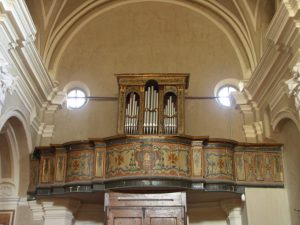
- Chiesa di San Pietro Apostolo
In Figlino we can find the beautiful church of St Peter the Apostle, which in the 18th century acquired a Baroque style that succeeded the native Byzantine style.
It was later adorned and enriched with a floor of Capodimonte majolica and paintings by the painter Domenico Ferrara.
Curiosities
- Basket makers
Tramonti is famous throughout the coast for its baskets made by weaving the tender branches of chestnut trees.
Unfortunately, this noble art is gradually disappearing due to a lack of craftsmen.
- Culinary Art
Tramonti, as a daughter of the Amalfi Coast, cannot but be known for its natural herbs and lemons.
Thanks to natural herbs, in the ancient conservatory of SS. Giuseppe and Teresa in Pucara, Concerto, a typical infusion of herbs and spices, was born.
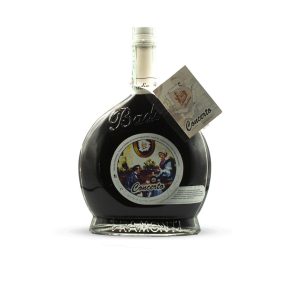
- With lemons, known and appreciated all over the world, from the peels of the ‘sfusato’ lemon comes Limoncello.
Also prized are chestnuts, vegetables and, in particular, the Fiascone tomato, an excellent tomato variety for sauce and preserves.
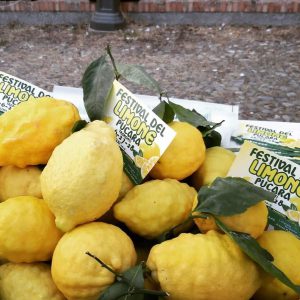
All you have to do is set off for Tramonti and its beautiful hamlets, to enjoy a unique experience in the midst of nature and good food.
Enjoy discovering Tramonti from Initaly.eu .
Read more click here!

